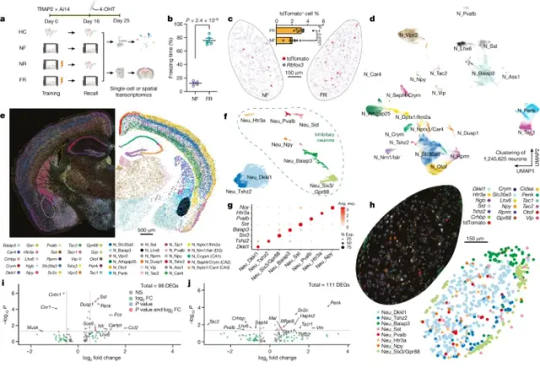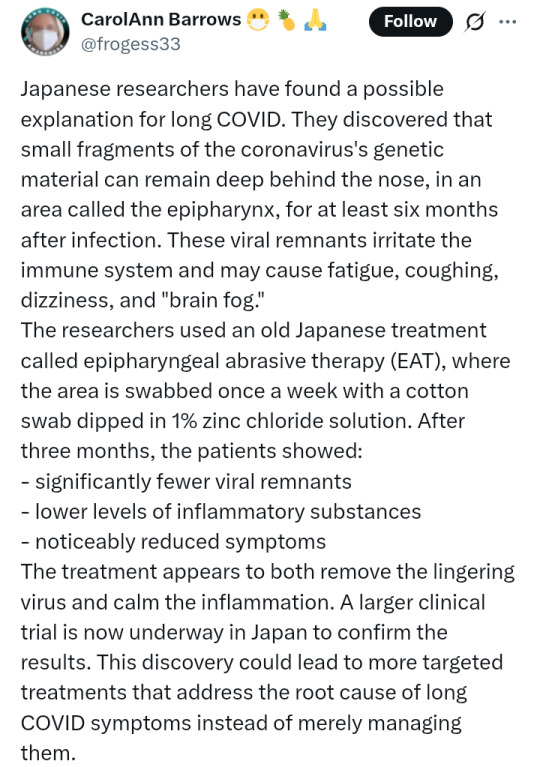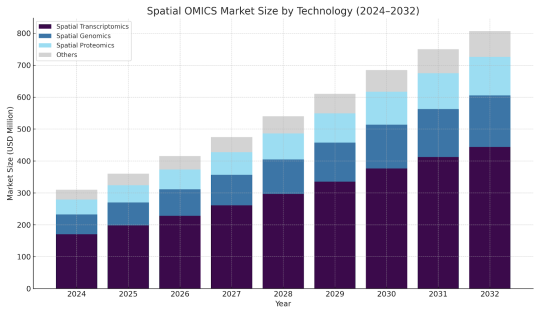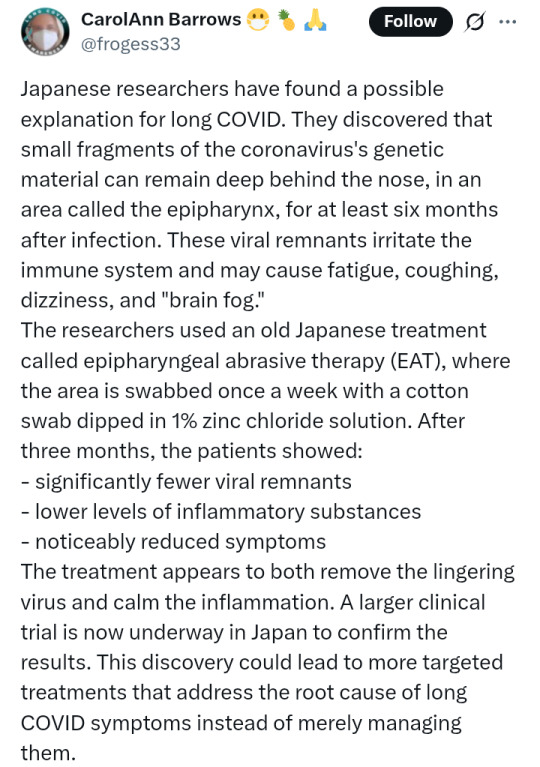#spatial transcriptomics
Explore tagged Tumblr posts
Text
Spatial Genomics Transcriptomics Market is growing amid VC Funding Surge

Market size and Overview The Spatial Genomics Transcriptomics Market is witnessing a robust influx of venture capital and strategic alliances.
The Global Spatial Genomics Transcriptomics Market size is estimated to be valued at USD 335.8 Mn in 2025 and is expected to reach USD 790 Mn by 2032, exhibiting a compound annual growth rate (CAGR) of 13% from 2025 to 2032. Cutting-edge single-cell mapping technologies and spatial multiomics integration are driving this expansion. Our detailed Spatial Genomics Transcriptomics Market Insights report underscores the rise of spatial proteomics and in situ sequencing segments, shaping future market dynamics. This market report consolidates comprehensive market research and real-world data to refine growth strategies and anticipate market opportunities. By 2032, sustained market growth and increased market size will reflect accelerated industry adoption. Get more insights on,Spatial Genomics Transcriptomics Market
#Coherent Market Insights#Spatial Genomics Transcriptomics#Spatial Genomics Transcriptomics Market#Spatial Genomics Transcriptomics Market Insights#Instruments
0 notes
Text
Global Europe, Cis & Africa Spatial Transcriptomics Market: Insights and Market Forecast
The Europe, CIS & Africa spatial transcriptomics market was valued at approximately USD 93.9 million in 2023 and is expected to experience robust growth, with a projected compound annual growth rate (CAGR) of 15.57% from 2024 to 2030. Several key factors are contributing to this growth, including the increasing recognition of spatial omics analysis in cancer research, the introduction of fourth-generation sequencing technologies (such as in-situ sequencing), and a surge in funding and collaborative initiatives aimed at advancing spatial biology research.
A primary driver behind the market expansion is the rising prevalence of cancer. As cancer rates continue to climb, there is an increasing demand for more effective approaches to biomarker discovery, early detection, and precise diagnostics. These advancements are critical for better disease management and more targeted treatment options. Spatial omics analysis, particularly in the field of oncology, has shown considerable promise in addressing these needs. It offers a more nuanced understanding of tumor heterogeneity, supports the identification of potential biomarkers, and helps inform personalized treatment strategies that can be tailored to individual patients.
One of the major advantages of spatial omics technologies is their ability to map the spatial distribution of various cell types within a tumor. This feature is vital for studying the heterogeneity of tumors, which can significantly affect treatment outcomes. A relevant example of this is a study published in Nature in May 2024, where researchers employed both spatial and single-cell transcriptomics to explore the molecular interactions and tumor heterogeneity in colorectal cancer (CRC). By using these advanced techniques, the researchers were able to gain deeper insights into the underlying mechanisms driving CRC progression, showcasing the potential of spatial transcriptomics in improving our understanding of complex diseases like cancer.
Gather more insights about the market drivers, restrains and growth of the Europe, Cis & Africa Spatial Transcriptomics Market
Country Insights
Europe led the spatial transcriptomics market in 2023, commanding a dominant share of 94.57%. This dominance can be attributed to the region's well-established biotechnology research and development (R&D) sector, its growing emphasis on spatial biology, and the presence of leading industry players. Additionally, substantial investments and funding from both public and private entities have significantly contributed to advancing spatial transcriptomics research and facilitating the commercialization of spatial omics products, further driving market growth.
United Kingdom (UK):
The spatial transcriptomics market in the UK is anticipated to experience significant growth in the coming years. This is largely due to the continuous technological advancements in spatial biology, which are increasingly being applied across various fields such as oncology, neurology, and personalized medicine. A key example of the UK's role in fostering innovation is the 12th Annual Single Cell & Spatial Analysis UK Congress, part of Next Gen Omics 2024, scheduled for October 23-25, 2024, in London. This prominent event will bring together leading experts from around the world to discuss the latest developments, cutting-edge technologies, and future prospects of spatial biology, underscoring the UK's position as a hub for research and innovation in the field.
Germany:
Germany's spatial transcriptomics market is experiencing significant growth, particularly within the broader multi-omics field. The country benefits from active engagement by renowned academic institutions, leading biotechnology and pharmaceutical companies, and substantial government-backed research funding. For example, in early 2024, the European Molecular Biology Laboratory (EMBL) hosted a series of events and training courses, focusing on integrating and analyzing multiomics data, further enhancing the country's position in spatial transcriptomics and related fields.
France:
In France, the spatial transcriptomics market is also set to witness strong growth, driven by the increasing adoption of advanced genomic technologies and their expanding applications across diverse fields such as cancer research, drug discovery, and translational research. Moreover, the French government’s continued investment in genomic research initiatives is providing a solid foundation for the market’s development, fostering both innovation and collaboration in the space.
Commonwealth of Independent States (CIS) Market Trends
The CIS region, which includes countries such as Russia, Ukraine, Belarus, and Kazakhstan, is expected to see growth in the spatial transcriptomics market. This growth is largely fueled by an increased adoption of advanced genomics and transcriptomics technologies, a growing focus on spatial biology research, and rising demand for more detailed insights into cellular function and organization. These CIS countries are home to several well-established research institutions and academic centers with deep expertise in molecular biology and biotechnology, providing a strong foundation for growth in spatial transcriptomics research and applications.
Africa Spatial Transcriptomics Market Trends
South Africa is expected to experience significant growth in the spatial transcriptomics market, driven by an increased demand for improved diagnostic tools that support disease prevention and treatment. The country’s growing healthcare sector, combined with ongoing advancements in genomic technologies, creates a promising landscape for the adoption of spatial transcriptomics.
In contrast, the Nigerian market for spatial transcriptomics remains in its early stages. While there is potential for growth, the market faces challenges due to the high costs associated with specialized equipment and reagents. Additionally, the need for skilled labor to operate these advanced technologies represents another potential barrier to rapid market development. As such, significant investment in infrastructure, training, and research capacity will be necessary to accelerate market growth in Nigeria and other parts of West Africa.
Browse through Grand View Research's Biotechnology Industry Research Reports.
• The global exosomes market size was estimated at USD 177.4 million in 2024 and is anticipated to grow at a CAGR of 28.73% from 2025 to 2030.
• The global cell culture media storage containers market size was estimated at USD 2.11 billion in 2024 and is projected to witness a CAGR of 12.55% from 2025 to 2030.
Key Europe, CIS & Africa Spatial Transcriptomics Company Insights
Several key players in the spatial transcriptomics market are actively pursuing strategies to strengthen their market presence and expand the reach of their products and services. These strategies primarily include expansion activities and strategic partnerships aimed at advancing research, increasing the commercialization of spatial omics products, and enhancing collaborations between academia and industry. Through these initiatives, companies are not only boosting their market footprint but are also contributing to the broader advancement of spatial biology and transcriptomics technologies.
Key Europe, CIS & Africa Spatial Transcriptomics Companies:
• Illumina, Inc.
• Bruker
• 10X Genomics
• EdenRoc Sciences (Cantata Bio, LLC)
• Shimadzu Corporation
• Waters Corporation
• Bio-Techne
• Vizgen Inc.
• Spatial Genomics
• Akoya Biosciences, Inc
Order a free sample PDF of the Europe, Cis & Africa Spatial Transcriptomics Market Intelligence Study, published by Grand View Research.
#Europe#Cis & Africa Spatial Transcriptomics Market#Cis & Africa Spatial Transcriptomics Market Analysis#Cis & Africa Spatial Transcriptomics Market Report#Cis & Africa Spatial Transcriptomics Market Regional Insights
0 notes
Text
Spatial Genomics Transcriptomics: A Novel Method for Analyzing Cellular Heterogeneity

Spatial genomics transcriptomics is an emerging single-cell sequencing technique that allows for the measurements of gene expression across spatially localized regions of a tissue. Unlike traditional single-cell RNA sequencing approaches that dissociate tissues into single cells before analysis, spatial genomics transcriptomics retains the spatial architecture and cellular context of the original tissue. This property allows researchers to map gene expression profiles onto precise locations in tissues and identify cell types in various anatomical regions. How Does it Work? At the core of the technology is a hydrogel-based tissue immobilization method. Tissues are frozen and embedded in a hydrogel matrix. The hydrogel stabilizes cell positions relative to one another during subsequent processing steps. The embedded tissue is then sliced into thin sections and mounted onto a glass slide. Oligonucleotide-conjugated barcodes are arrayed on the slide in distinct spots. When the tissue section is placed on top, cells come into contact with the array spots, with each spot representing a discrete location in the original tissue. Cellular mRNAs are released, diffuse through the hydrogel, and hybridize to complimentary barcodes. The slide is then subjected to reverse transcription and library preparation for sequencing. In this way, DNA sequences representing the transcriptomes of cells from defined locales are generated and spatially mapped. Data Analysis and Visualization The sequenced libraries contain both positional barcode and gene expression information which can be analyzed using computational techniques. Spatial gene expression maps of the original tissue are reconstructed by aligning the sequencing reads back to the original positional barcode array. This data can then be analyzed with various clustering and dimensionality reduction algorithms to identify regionalized cell populations and characterize their transcriptomic signatures. Spatial expression patterns are often visualized as "heatmaps" - with gene expression abundance levels represented by a color gradient across the tissue area. Various bioinformatics tools have also been developed to integrate spatial transcriptomics data with other omics data types, annotations, and cellular atlases - allowing researchers to compare expression profiles against known cell types and phenotypes. Applications and Insights In the past few years, spatial genomics transcriptomics has offered new perspectives on tissue organization and enabled discoveries that conventional methods could not. For example, studies have mapped immune cell infiltration patterns in tumor microenvironments with single-cell resolution. This has provided clues about how the interplay between tumors and immune responses impact clinical outcomes. In the brain, spatial transcriptomics has revealed molecular definitions of cortical layers and subregions, characterized progenitor cell zones in the hippocampus, and tracked neural cell maturation across development. By preserving spatial relationships, it has also facilitated discoveries like gradients of gene expression correlating with tissue architecture in the skin. Researchers are also exploring its potential in fields like developmental biology, neuroscience, immunology and more - to decipher how tissues are patterned, gain insights into disease progression and responses to therapies, and map cell-cell communication networks at a fine-scale level in intact native environments. As protocols evolve to incorporate additional readouts like protein localization, spatial genomics promises to revolutionize our multi-dimensional understanding of tissue organization and function.
#Spatial Genomics Transcriptomics Size#Spatial Genomics Transcriptomics Share#Spatial Genomics Transcriptomics Trends.
0 notes
Text
#Spatial Genomics & Transcriptomics Market#Spatial Genomics & Transcriptomics Market size#Spatial Genomics & Transcriptomics Market share#Spatial Genomics & Transcriptomics Market trends#Spatial Genomics & Transcriptomics Market analysis#Spatial Genomics & Transcriptomics Market forecast
0 notes
Text
Global Spatial Genomics Transcriptomics Market Is Estimated To Witness High Growth Owing To Increasing Adoption of Spatial Genomics Technologies

Market Overview: Spatial genomics transcriptomics combines the technologies of spatial transcriptomics and genomics to analyze gene expression within the context of tissue architecture. This innovative approach allows researchers to study the spatial organization of gene expression within individual cells, leading to a better understanding of various biological processes and disease mechanisms. The market for spatial genomics transcriptomics is driven by the increasing adoption of these technologies in various research applications, including cancer research, neurobiology, developmental biology, and immunology. The ability to analyze gene expression within the context of tissue architecture provides valuable insights into cell-to-cell interactions, cellular heterogeneity, and spatial relationships, making it a powerful tool for biomedical research. The global Spatial Genomics Transcriptomics Market Size is estimated to be valued at US$ 262.7 million in 2023 and is expected to exhibit a CAGR of 13% over the forecast period 2023-2030, as highlighted in a new report published by Coherent Market Insights. Market Key Trends: One key trend driving the growth of the spatial genomics transcriptomics market is the increasing demand for single-cell analysis. Single-cell analysis allows researchers to study individual cells rather than bulk population samples, providing a deeper understanding of cellular heterogeneity and development. Spatial genomics transcriptomics takes single-cell analysis a step further by incorporating spatial information, enabling researchers to study gene expression within the context of tissue architecture. This integrated approach allows for a more comprehensive analysis of complex biological systems and has the potential to revolutionize our understanding of cellular processes and disease mechanisms. For example, 10x Genomics, one of the key players in the spatial genomics transcriptomics market, offers the Visium Spatial Gene Expression Solution, which enables researchers to analyze gene expression in intact tissue sections. This technology allows for the identification of cell types, mapping of gene expression, and analysis of the spatial relationships between cells. By combining single-cell analysis with spatial information, researchers can gain valuable insights into the role of gene expression in tissue development and disease progression. PEST Analysis: Political: The spatial genomics transcriptomics market is influenced by government regulations and policies regarding genomics research and healthcare. Government funding and support for research initiatives can drive market growth. Economic: The market is driven by increasing investment in genomics research and the growing demand for personalized medicine. The economic factors, such as GDP growth, healthcare expenditure, and disposable income, also impact the adoption of spatial genomics transcriptomics technologies. Social: The growing prevalence of chronic diseases and the need for better diagnostic and treatment options are driving the demand for spatial genomics transcriptomics technologies. The increasing awareness and acceptance of personalized medicine among patients and healthcare professionals are also contributing to market growth. In conclusion, the spatial genomics transcriptomics market is poised for significant growth due to the increasing adoption of these technologies in various research applications. The integration of spatial information with gene expression data provides valuable insights into cellular processes and disease mechanisms, driving the demand for spatial genomics transcriptomics technologies. With advancements in genomics research and technological innovation, this market is set to revolutionize our understanding of biology and contribute to the development of personalized medicine.
#Spatial Genomics Transcriptomics Market#Spatial Genomics Transcriptomics Market Size#Coherent Market Insights#Spatial Genomics Transcriptomics Market Demand#Spatial Genomics Transcriptomics Market Growth#Spatial Genomics Transcriptomics Market Trends#Spatial Genomics Transcriptomics Market Analysis#Spatial Genomics Transcriptomics Market Forecast
0 notes
Text
Making my own post bc there were some comments on the one I saw going around that I didn't want on my blog for Reasons, but GUYS. PROGRESS. I so hope this yields good results in bigger studies. Even if it doesn't help everyone with long COVID, being able to help SOME people is still a huge step! And might give researches new ideas on where else to look for root causes in folk! Aaaaaa!
21 notes
·
View notes
Note
https://www.tumblr.com/furiousfinnstan/785093719685726208/spatial-transcriptomics-of-the-epipharynx-in-long did you see this?!
I posted about it earlier this week, and that post is overstating and misunderstanding a lot of stuff about long covid and that specific research.
^the post I made with my and other's insight
#mask up#public health#wear a mask#wear a respirator#still coviding#pandemic#covid#covid 19#coronavirus#sars cov 2
7 notes
·
View notes
Text
I was not made to do this presentation on neurons responsible for spatial reasoning in mice, I was made to be a thotty little thembo with my edgy little pentagram garters (that also makes presentations on transcriptomics)
48 notes
·
View notes
Text

Fly Through
With over 20,000 genes inside most human cells, one challenge is finding out which of them are “switched on” or expressed – and where? And when? These questions are easier to answer first in simpler but similar organisms like the fruit fly (Drosophila melanogaster). Spatial transcriptomics spots the mRNA molecules produced during gene expression, a vital step in producing proteins that give cells their traits and behaviours. In this cross section through one fly, different colours highlight distinct mRNAs. Building on work to map out the fly’s cell atlas, spatial transcriptomics reveals subtle patterns in gene expression – and potential clues to previously unknown pools of cells. Similar approaches may help to map out variation in human cells and tissues, as well as potential targets in cancers.
Written by John Ankers
Image from work by Jasper Janssens and colleagues
VIB-KU Leuven Center for Brain and Disease Research, KU Leuven, Leuven, Belgium; Aix Marseille University, CNRS, IBDM, Turing Centre for Living Systems, Marseille, France
Image originally published with a Creative Commons Attribution 4.0 International (CC BY 4.0)
Published in eLife, March 2025
You can also follow BPoD on Instagram, Twitter, Facebook and Bluesky
#science#biomedicine#immunofluorescence#biology#neuroscience#neurons#brain#cells#fruit fly#drosphila#fly atlas
6 notes
·
View notes
Text

Spatial transcriptomics reveal neuron–astrocyte synergy in long-term memory - Wenfei Sun, Zhihui Liu, Xian Jiang, Michelle B. Chen, Hua Dong, Jonathan Liu, Thomas C. Südhof & Stephen R. Quake
3 notes
·
View notes
Text

SUICIDE POSTPONED INDEFINITELY !!!!!
THEY MIGHT HAVE FIGURED OUT WHATS CAUSING LONG COVID?!?!???
#COVID#long covid#covid 19#**mine#news#covid 2025#covid conscious#covid is not over#covid is airborne#covid is still a thing
74K notes
·
View notes
Text
0 notes
Text
Un nuevo GPS molecular podría acelerar el descubrimiento de fármacos
Un nuevo ‘GPS molecular’ podría acelerar el descubrimiento de fármacos Científicos de la Universidad Northwestern (Estados Unidos) han desarrollado el mayor recurso de acceso abierto de su tipo para ayudar a los investigadores a ahorrar meses de tiempo en el desarrollo inicial de fármacos, permitiéndoles comprender mejor las enfermedades y encontrar tratamientos potenciales. Se trata de una plataforma, ahora en funcionamiento, denominada SOAR (Spatial transcriptOmics Analysis Resource). Fuente: infosalus.com Automatizado por IFTTT ¿Quieres aprender más sobre salud natural? Descubre nuestros libros y guías en: https://saludfuturo.blog https://saludfuturo.gumroad.com Tags and categories: Español, Automatización, IFTTT, infosalus.com, Noticias, Salud via WordPress https://ift.tt/GC0gKkN June 18, 2025 at 02:12AM
0 notes
Text
Spatiotemporal Omics Market: Growth Trends, Technologies, and Future Forecast

What is spatiotemporal omics?
Spatiotemporal omics is an advanced approach in molecular biology that integrates spatial and temporal dimensions into multi-omics analyses (e.g., genomics, transcriptomics, proteomics, metabolomics). This technique enables the mapping of biomolecular changes within the precise anatomical context of tissues over time, offering unprecedented resolution into how cellular behavior evolves in health and disease. It has transformative potential in areas such as oncology, neuroscience, immunology, and developmental biology, driving innovation in precision medicine and systems biology.
The Spatio OMICS Market is expected to grow at a significant rate due to advancements in sequencing and imaging technologies, and expansion of research and development funding.
Which technologies are driving the spatiotemporal omics market?
Spatial Transcriptomics – Maps gene expression in tissue context
Spatial Proteomics – Visualizes protein distribution
Mass Spectrometry Imaging (MSI) – Detects molecules with spatial precision
Single-Cell RNA Sequencing (scRNA-seq) – Captures temporal changes at cell level
Multiplexed Imaging (e.g., CODEX, MIBI) – Analyzes many biomarkers in tissues
What are the current limitations or challenges in spatiotemporal omics adoption?
High Technology Costs: The advanced instruments and reagents required for spatiotemporal omics are costly, making adoption challenging for many academic and smaller research institutions. This financial barrier limits access despite rising interest in spatial biology.
Complexity of Data Analysis: Spatiotemporal omics generate vast, high-dimensional datasets combining molecular and imaging data. Processing this information demands specialized software, computational infrastructure, and bioinformatics expertise. Without these, deriving actionable insights can be slow and resource-intensive.
Limited Skilled Workforce and Infrastructure: The field requires interdisciplinary skills in molecular biology, spatial imaging, and data science. However, a shortage of trained professionals and inadequate infrastructure in many regions slows down adoption and implementation across research and clinical environments.
To get detailed information on Spatiotemporal OMICS Industry, Click here!
Which regions are investing heavily in spatiotemporal omics research and development?
North America
Europe
Asia-Pacific
Latin America
Who are the leading players in the spatiotemporal omics industry?
10x Genomics
NanoString Technologies
Akoya Biosciences
Bruker Corporation
Vizgen
RareCyte
For a comprehensive analysis, refer to the full report by BIS Research: Spatiotemporal OMICS Market.
End Use Insights
Innovation Strategy: It identifies opportunities for market entry and technology adoption, helping organizations stay ahead of the competition while meeting evolving customer demands.
Growth Strategy: The report outlines targeted growth strategies to optimize market share, enhance brand presence, and drive revenue expansion.
Competitive Strategy: It evaluates key competitors and offers practical guidance for maintaining a competitive edge in a rapidly evolving market.
Conclusion
The market for spatiotemporal omics is expected to increase significantly due to growing applications in clinical and research settings, growing need for precision medicine, and technical advancements. To keep a competitive edge, major competitors in the market are always improving their product offerings, investing in R&D, and inventing. Despite obstacles like exorbitant expenses and intricate data, the amalgamation of artificial intelligence and multi-modal platforms offers significant prospects. Organizations that use these insights can take advantage of development opportunities, overcome obstacles, and set themselves up for long-term success in the ever-changing spatiotemporal omics landscape.
#Spatiotemporal Omics Market#Spatiotemporal Omics Industry#Spatiotemporal Omics Report#health#healthcare
0 notes
Text
Nature journal source: X

[Image ID: The Destiel confession meme edited so that Dean answers 'They might have found the cause and cure of long COVID'. /End ID]
source link

[Image ID: A screenshot of a post by CarolAnn Barrows. It reads:
"Japanese researchers have found a possible explanation for long COVID. They discovered that small fragments of the coronavirus's genetic material can remain deep behind the nose, in an area called the epipharynx, for at least six months after infection. These viral remnants irritate the immune system and may cause fatigue, coughing, dizziness, and "brain fog." The researchers used an old Japanese treatment called epipharyngeal abrasive therapy (EAT), where the area is swabbed once a week with a cotton swab dipped in 1% zinc chloride solution. After three months, the patients showed:
- significantly fewer viral remnants
- lower levels of inflammatory substances
- noticeably reduced symptoms
The treatment appears to both remove the lingering virus and calm the inflammation. A larger clinical trial is now underway in Japan to confirm the results. This discovery could lead to more targeted treatments that address the root cause of long COVID symptoms instead of merely managing them."
/End ID]
2K notes
·
View notes
Text
False positives in study of memory-related gene expression
Sun, W. et al. Spatial transcriptomics reveal neuron–astrocyte synergy in long-term memory. Nature 627, 374–381 (2024). Article ADS PubMed PubMed Central Google Scholar Storey, J. D. & Tibshirani, R. Statistical significance for genomewide studies. Proc. Natl Acad. Sci. USA 100, 9440–9445 (2003). Article ADS MathSciNet PubMed PubMed Central Google Scholar Benjamini, Y. & Hochberg,…
#Fear conditioning#Gene expression#Humanities and Social Sciences#multidisciplinary#Science#Statistical methods
0 notes